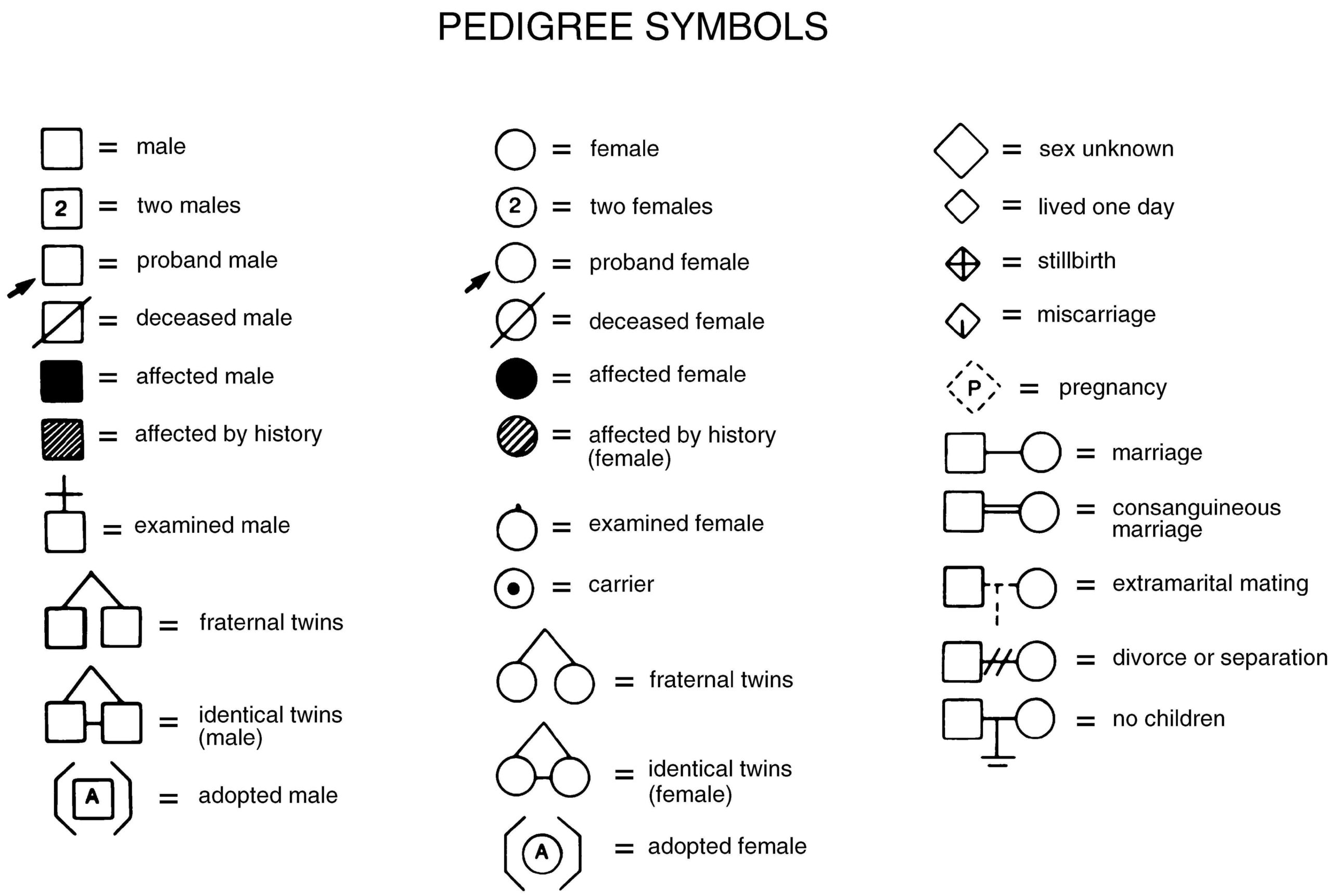Genogram Symbols
A genogram is a graphical representation of a family tree that displays detailed data on relationships among individuals. It extends a conventional family tree by adding a variety of symbols representing important family dynamics and the psychological and social relationships.
Basic Genogram Symbols
1. Gender: In a genogram, males are represented by a square and females by a circle.
2. Family Structure: The family tree symbol represents direct parents and their children. The family ring represents immediate family (mother, father, siblings, and grandparents).
3. Personal Information: Basic genogram symbols show the critical and personal information of a person. They represent birth, age, pregnancy situation, immigration, sexual orientation, etc.
Applications of Genograms
Genograms are popular tools used by mental health professionals to spot patterns throughout generations of a family. They can be used to learn about a family’s history of mental illness, highlight patterns of behavior, and relationship styles. For example, a genogram can help your client gain insight about abuse that seems to have haunted their family for generations.
History of Genograms
Genogram symbols are a graphic method of showing family relations within a social network. They were invented by Dr. Robert Young and Dr. Thomas O’Neil in the 1980s.
Conclusion
Genograms are powerful tools for understanding family systems and patterns. They provide a wealth of information that can be crucial for therapeutic interventions, medical histories, and understanding complex family dynamics. The symbols used in genograms are the key to unlocking these insights, providing a visual language for family relationships and patterns.


